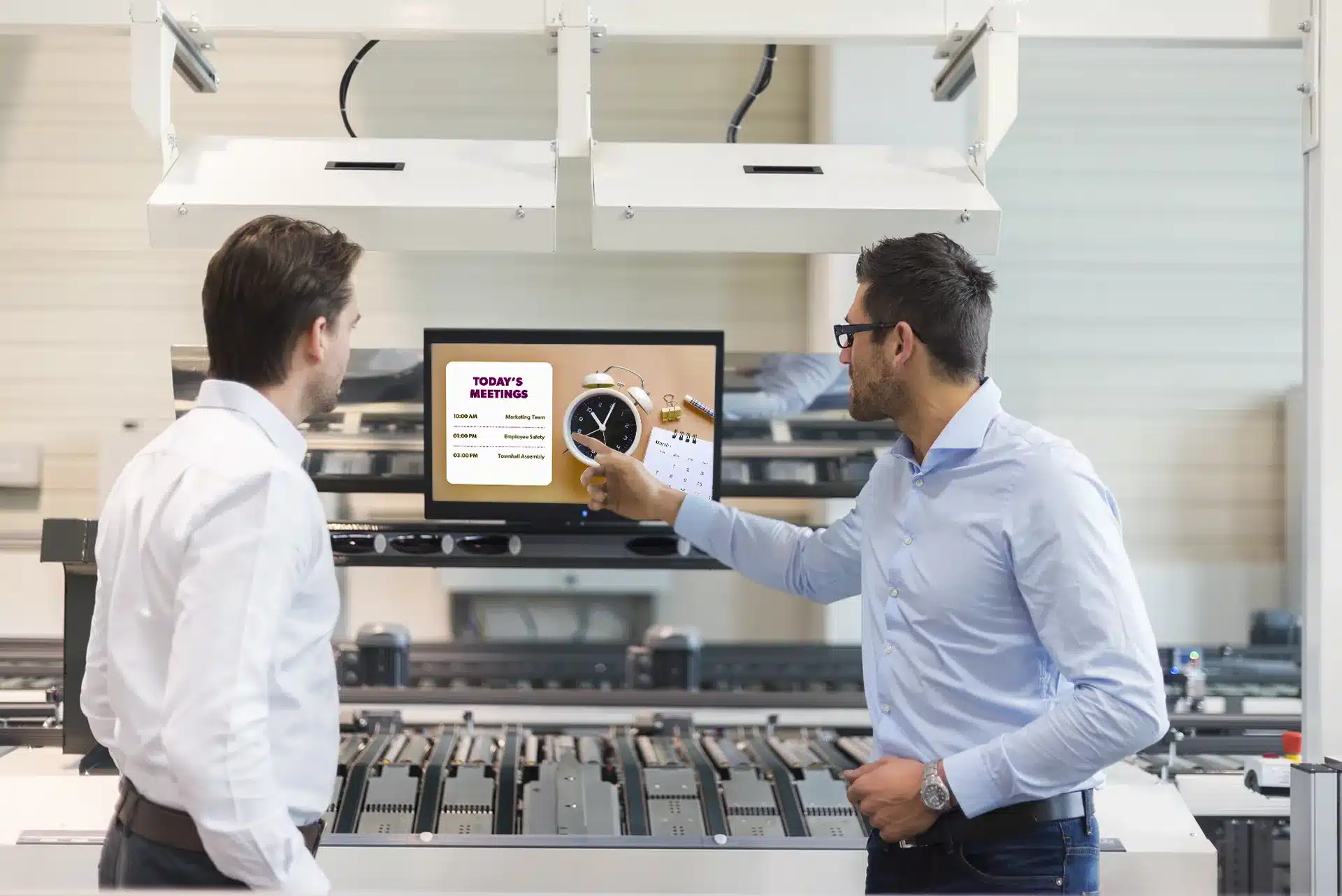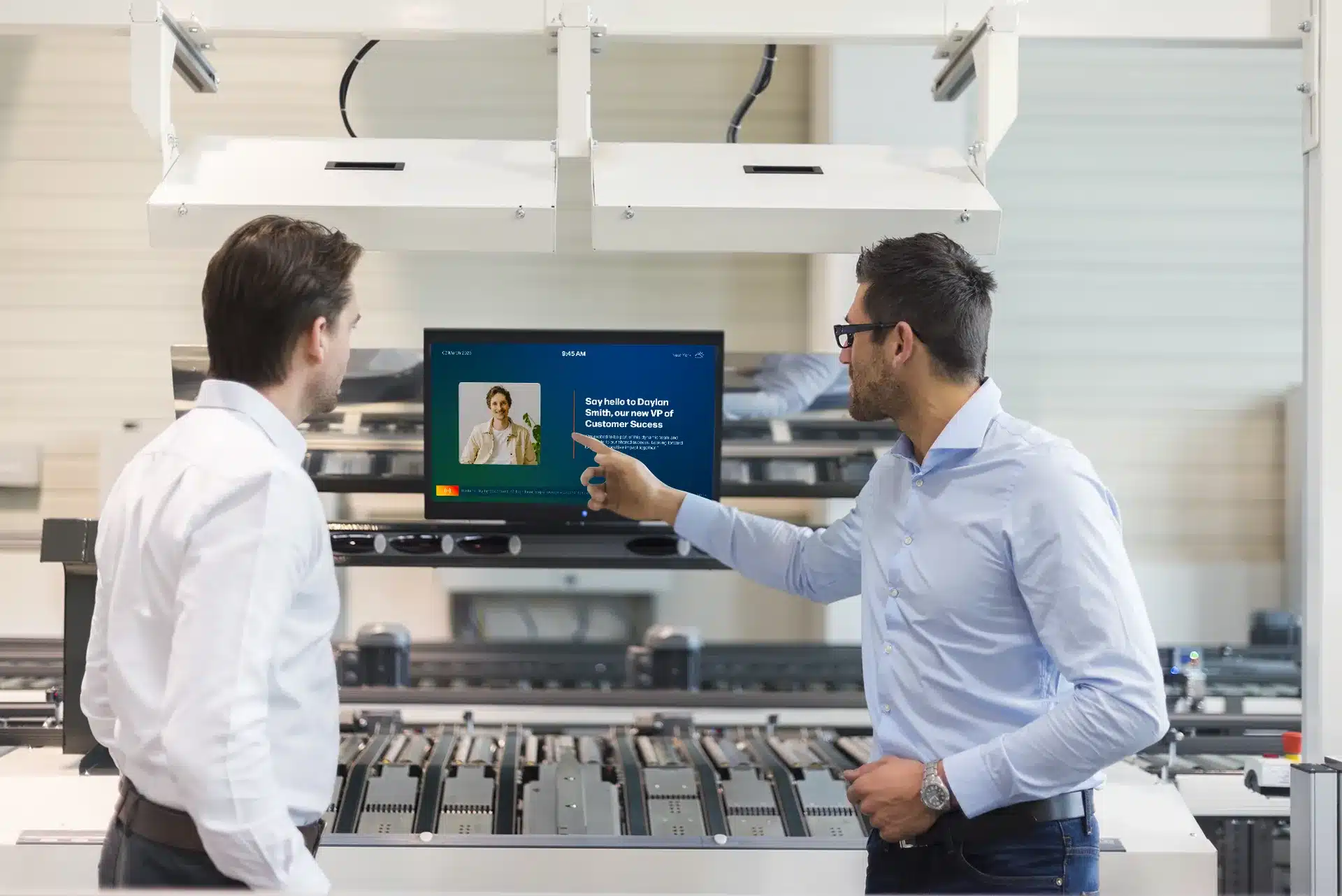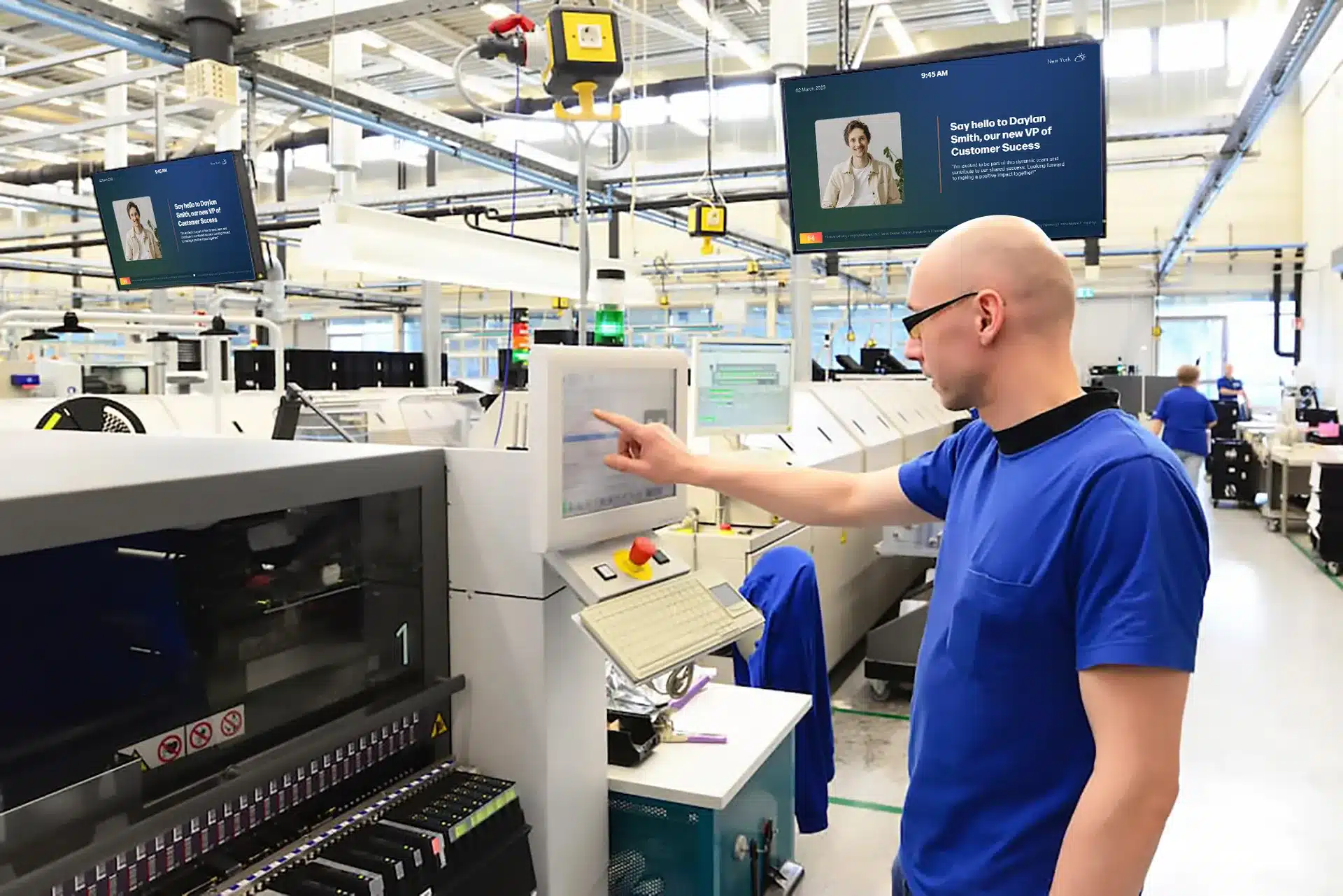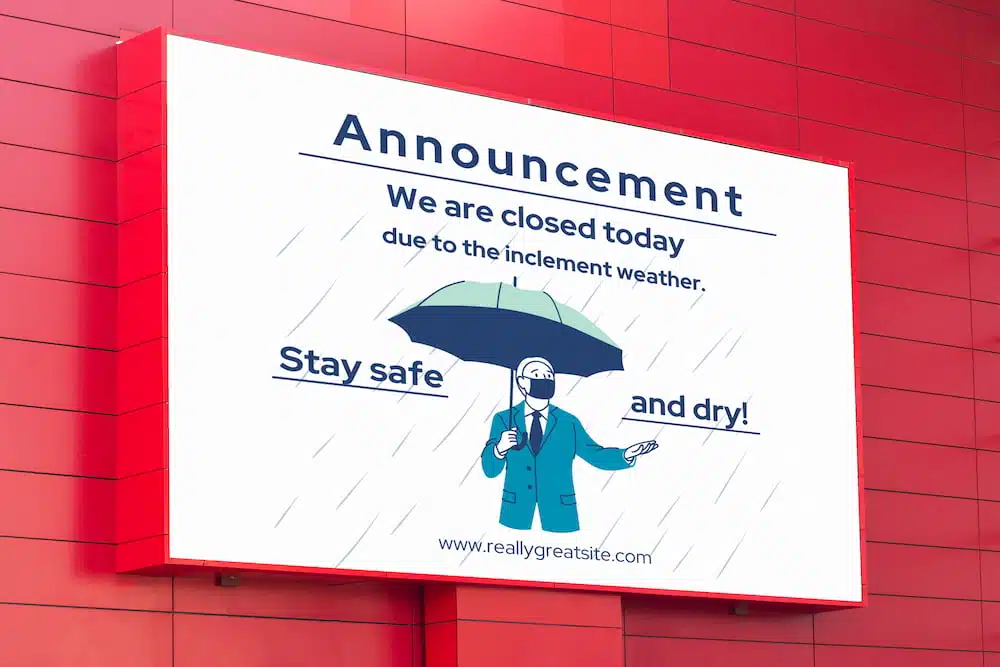
Improving Warehouse Productivity with Warehouse Digital Signage
Discover New Possibilities! Click Here to Download Your Free eBook Today and Unlock Expert Insights! Communication is critical in a …

In industrial operations, the significance of real-time performance management cannot be overstated. Accessing real-time data and updates is a cornerstone of operational efficiency, safety, and process optimization.
As industries continue to evolve, the need for immediate and precise performance insights becomes increasingly pivotal.
However, a critical challenge arises in the prompt relay of performance data. Conventional methods often struggle to keep up with the rapid changes inherent to industrial operations.
In response to this challenge, there arises a compelling need for innovative solutions that can bridge the gap between data generation and its timely dissemination.
Enter the concept of integrating digital signage for real-time updates. Digital signage, with its interactive and dynamic capabilities, has the potential to revolutionize the way industries access, interpret and act upon performance data.
By providing instantaneous and easily understandable information, it empowers both management and frontline workers to make informed decisions, respond swiftly to changes, and ultimately contribute to the overall success of industrial operations.
Let’s delve into the significance of real-time performance management in industrial settings, exploring the challenges faced in delivering timely feedback and highlighting the role of digital signage as a transformative tool in this pursuit.

Staff motivation is an invaluable core in industries that are often overlooked. A motivated workforce is the bedrock upon which productivity and success in any organization are built.
This section explores the profound impact of staff motivation on overall productivity, delves into the connection between transparency and employee engagement, and highlights the pivotal role of performance data in fostering a motivated workforce.
Motivated employees are the driving force behind an organization’s productivity. When motivated, employees are more likely to fully engage in their work, resulting in increased effort, improved job performance, and a more substantial commitment to achieving organizational goals.
The concrete results of a motivated workforce encompass increased productivity, elevated work quality, and enhanced efficiency in diverse operational processes. This, in turn, directly influences the overall success and competitiveness of the organization.
Transparency within an organization is critical in motivating employees. When employees can access clear and timely information regarding their performance and the organization’s goals, they feel a sense of inclusion and ownership.
Transparency not only nurtures trust but also enables employees to make informed judgments and take initiative in their positions.
This sense of involvement and understanding of their contributions significantly enhances employee engagement, creating a positive feedback loop where engaged employees are more likely to remain motivated and productive.
Performance data is the backbone of any effective employee performance management system. It provides employees with real-time insights into their progress and areas for improvement.
When employees have access to their performance data, it enables them to set and track goals, leading to a sense of accomplishment as they achieve milestones.
Additionally, data-driven feedback and recognition can boost employee morale and motivation, as they can see the direct impact of their efforts.

Digital signage technology, which utilizes display screens and content management systems, enhances real-time performance management.
It is characterized by its compatibility with third-party performance tracking software, seamlessly displaying real-time performance data and key performance indicators.
This integration leverages existing performance management systems to provide employees with accessible and visually engaging insights into their progress while aiding management in tracking performance trends.
Automated updates are a crucial component of real-time performance management, ensuring the provision of accurate and timely performance insights. In today’s ever-evolving industrial and business environment, up-to-the-minute data is vital.
Automation streamlines the retrieval and display of real-time data, reducing the risk of human error and guaranteeing that performance information is consistently up to date.
This process empowers organizations to make swift, informed decisions and adjust promptly to changing conditions, benefiting everyone from frontline employees to senior management.
Integrating real-time performance insights through performance management tools offers compelling advantages.
In this section, we will explore the core benefits of real-time performance insights, highlighting how they enhance employee awareness, inform decision-making, and foster increased accountability and ownership within an organization.
Real-time performance insights grant employees quick access to individual and team performance data.
This transparency allows individuals to gauge their progress and understand how their contributions align with broader organizational goals.
Team members can also track their collective performance, promoting collaboration and a shared sense of purpose.
Real-time insights enable organizations to maintain openness in goal-setting and outcomes. Employees can see the objectives and key performance indicators (KPIs) that drive their work.
This transparency fosters a sense of direction and purpose, aligning employees with the broader mission of the organization.
Real-time performance insights provide the foundation for informed decision-making. Organizations can adapt their strategies promptly based on dynamic data, responding to changing conditions and opportunities as they arise.
This adaptability is crucial for remaining competitive in today’s fast-paced business environment.
Real-time data allows for agile workflow navigation. Employees and management can make real-time adjustments to prioritize tasks, allocate resources, and optimize processes.
This flexibility ensures that actions align with the most up-to-date information, leading to more efficient operations.
Real-time performance insights empower employees by assigning data-driven responsibility.
When individuals have access to their performance data, they take ownership of their progress and actively seek ways to improve.
This empowerment fosters a culture of accountability, where employees understand the impact of their contributions on organizational success.
Real-time insights facilitate aligning personal goals with organizational objectives.
When employees have a clear view of how their work connects to the broader mission and goals of the organization, they are more motivated to work towards shared success. This alignment contributes to a more engaged and goal-oriented workforce.

Leveraging real-time insights during peak demand periods is a game-changer. It equips organizations to make swift, informed decisions and allocate resources efficiently, ensuring operations run at maximum capacity during critical moments.
The agility to adapt swiftly to fluctuating demands is a critical factor in maintaining productivity and ensuring that crucial moments are met with efficiency and success.
Real-time performance management fosters a culture of continuous improvement driven by instant feedback. Employees, armed with real-time performance data, can proactively identify areas for improvement and make necessary adjustments.
This culture of continuous improvement not only boosts productivity but also drives innovation and efficiency, making it a fundamental asset for organizations striving for excellence.
Furthermore, real-time performance data enables organizations to seize opportunities for optimization, whether by streamlining processes, reducing waste, or implementing innovative solutions promptly.
These insights enhance productivity and competitiveness in an ever-evolving business landscape.
When integrating digital signage into existing systems, there are several key considerations to ensure a seamless implementation.
This section examines the challenges and solutions for integrating digital signage with existing systems. It highlights the importance of ensuring compatibility with various software platforms.
The integration of digital signage with existing systems can present challenges and solutions. Seamless integration often requires careful planning and collaboration between technical teams to ensure that the transition is smooth and disruption-free.
Identifying potential compatibility issues and addressing them proactively is crucial for a successful implementation.
Moreover, ensuring compatibility with various software platforms is essential for maximizing the benefits of digital signage integration and guaranteeing a cohesive and efficient workflow across the organization.
Efficient content management and customization are vital in effectively utilizing digital signage. Tailoring information displays to suit specific objectives and target audiences is critical to maximizing the impact of the displayed content.
By customizing displayed information, organizations can ensure that employees concentrate on the most pertinent data, enriching their engagement and comprehensive comprehension.
A well-thought-out content management strategy not only optimizes the effectiveness of digital signage but also contributes to a more streamlined and efficient communication process within the organization.
Real-time performance management through digital signage offers numerous benefits, and S3 Technologies excels in providing top-tier solutions.
Our digital signage tools empower organizations to boost employee motivation and productivity, creating a culture of accountability and continuous improvement.
We invite organizations to explore the integration of digital signage with S3 Technologies. This step promises enhanced workforce empowerment and a brighter, more efficient future.
Seize the opportunity to transform your organization by embracing real-time performance management with S3 Technologies. Your success story begins here, and we’re here to assist you. Contact us today and be a catalyst of change!

Discover New Possibilities! Click Here to Download Your Free eBook Today and Unlock Expert Insights! Communication is critical in a …

If you’re an HR or Communications leader, have you ever considered making your corporate messages hit the right note? Well, …

Digital signage health and safety helps manage staff members and can also help ensure the safety of your employees. Notifying …

When shift labor is involved, three distinct eight-hour shifts are typically worked in 24 hours. A manager is normally assigned …